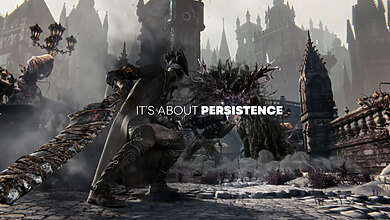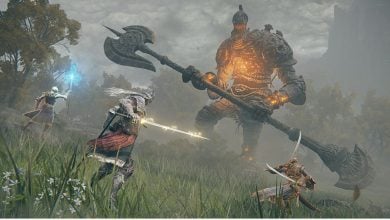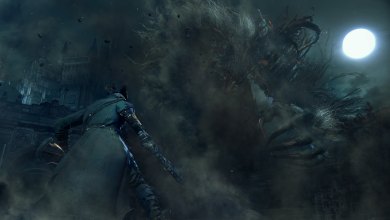Story Highlights
With games like Lies of P and Lords of the Fallen coming out recently, discussions of what makes a title “Soulslike” are once again cropping up. On the surface, the major elements that make these games so reminiscent of FromSoftware’s Souls series are fairly self-explanatory. However it’s the execution of these core elements that can often make or break a title.
In some cases, fans even argue that a title can be considered a good game in its own right. But still fails to be a good Souls game. This grey area is where Dark Souls 2 falls for a lot of the fanbase, managing to remain a black sheep, even a decade after its release. Despite receiving a fairly positive reception when it first came out, the game has since then been the subject of vitriol from fans.
There are certainly elements in Dark Souls 2 that make it a worthwhile experience for any Souls fans. However, many still feel like it fails to improve upon, or even maintain the consistency and challenge that Dark Souls 1 provided. In a lot of ways, it feels like a game trying to mimic a Souls game, instead of actually being one. And with tons of new Souls titles since DS2’s release, that’s more evident now than ever before. Here’s how.
Difficulty For The Sake Of It
There’s no denying that the reason why the Soulslike genre took off in the way that it did, was because of its focus on difficult gameplay. These titles are meant to make players work for progress, often forcing them to learn enemy patterns and adapt their gameplay. The “git gud” motto might be a meme, but it’s also the crux of the Souls formula that many of the games are built upon.
But, that’s not all that goes into making a Souls title. A big misconception that some fans tend to have is that the difficulty is the entire point. The thing is, sure, these games are tough, but they’re always fair. Deaths are frequent in the Souls titles, but usually, they can be attributed to a mistake the player made. This is why when the game artificially ramps up difficulty, it feels a bit cheap and takes away from the true Souls experience.
Unfortunately, Dark Souls 2 takes that approach a lot. The game wanted to build upon the reputation that DS1 had garnered for being a “tough game”. But the developers seemingly failed to understand what kept Dark Souls 1 a challenging but ultimately fair experience. Dark Souls 2’s definition of difficulty is to simply add more enemies in every zone, making progress more of a slog than anything else.

What’s more, the enemy placement is often done in a way that leads to surprise ambushes. While other Souls games have these ambush-style encounters too, they are often few and far between. DS2, on the other hand, relies way too heavily on it, making the gameplay feel a bit cheap at times. Take Iron Keep as an example. The amount of high-health difficult enemies you have to clear just to get to the boss of that area is absurd.
To get a better idea of how the difficulty in DS2 was used as a gimmick consider the very first cinematic in the game. DS2 literally greets the player by saying that they’ll die, over and over again. Which while true, should never be what the game is built around. It’s like the developers solely cared about how often they could put the player into a position where they’ll die. Whether or not it felt deserved in the end.
Convoluted Time And Space
Dark Souls 1 is often praised by people for its interconnectivity. The first half of the game, before players can fast-travel, feels like an entirely different experience. Areas feel connected as if they’re part of a single, shared world. Dark Souls 2 somewhat abandons that style of level design. Instead, it opts to give players the ability to fast travel from the get-go.
While this is something that’s seen in Souls games after DS2 as well, the problem with DS2 is still that the game feels like it’s a bunch of random areas joined together to create the illusion of an interconnected world. Unlike in Dark Souls 1, where the Undead Burg would lead to The Depths, and then into Blighttown. In Dark Souls 2, areas that feel like they are miles apart from one another are shown to be mere steps away in-game.
Consider the distance from Majula to Heide’s Tower of Flame. The two areas are quite distinct in their architecture and appearance, yet a single tunnel is what connects the zones. It feels immersion-breaking, taking away from the experience of the interconnected world that DS2’s predecessor offered. This problem permeates throughout the entire game.
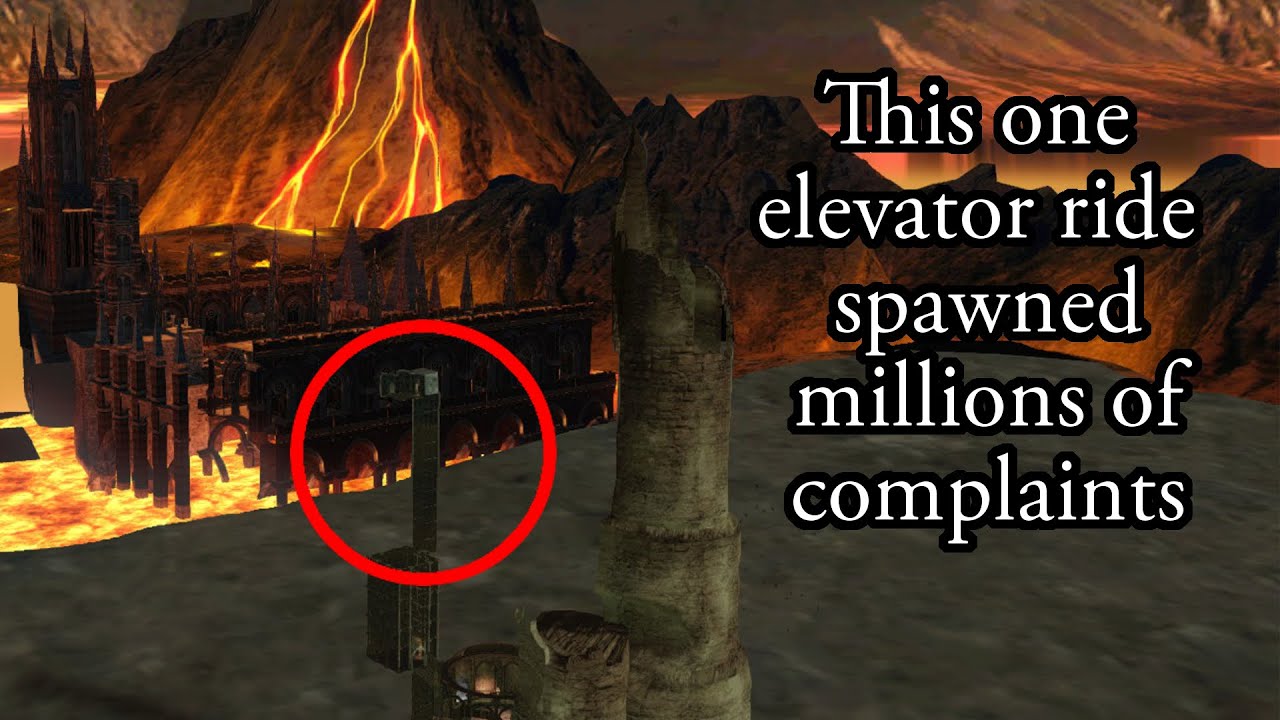
The worst example is likely the change in visuals as players reach the Iron Keep from the Earthen Peak. After climbing atop a poisonous windmill, players encounter an elevator. This seemingly takes them all the way up into the mountains, revealing a flaming citadel. The problem is that this was nowhere to be seen from the ground. The elevator logically can’t teleport players to wherever Iron Keep is supposed to be.
Yet, because the developers didn’t have the time, or the expertise to properly connect these two areas together, they simply inserted a way to sew them together like some kind of Frankenstein’s Monster. The go-to excuse fans of DS2 use to justify this is that time and space are all convoluted. So it makes sense why this happens. However, much of the rest of the world is still fairly intact. It’s only this one specific area that completely breaks all sense of logic.
You could argue that having areas that are so visually distinct come after one another is a plus. Because it helps to keep the game looking varied. Dark Souls 3 is often criticized for being too grey all the time. However, the loss of interconnectivity and general lack of logic and sense in how these areas link up is simply too big of a sacrifice for the small improvement in visual variety.
A Shallow Remaster
While the base Dark Souls 2 experience wasn’t the greatest, it’s made a lot worse by Scholar of the First Sin, the game’s remaster. While it’s described as the definitive way to play the title, the remasted does little more than amplify the base game’s problems. For one, enemy placements are even worse in the remaster. Ambushes are more prevalent.
Foes are now added to areas just to spike up the difficulty. The Chariot Boss from the Undead Purgatory has an identical version of it standing in a room in Drangleic Castle. Why exactly is that the case? Well, no one really knows. The developers simply had one extra room they needed filling and thought they could plop in a dead horse without considering if it made sense for it to be there.
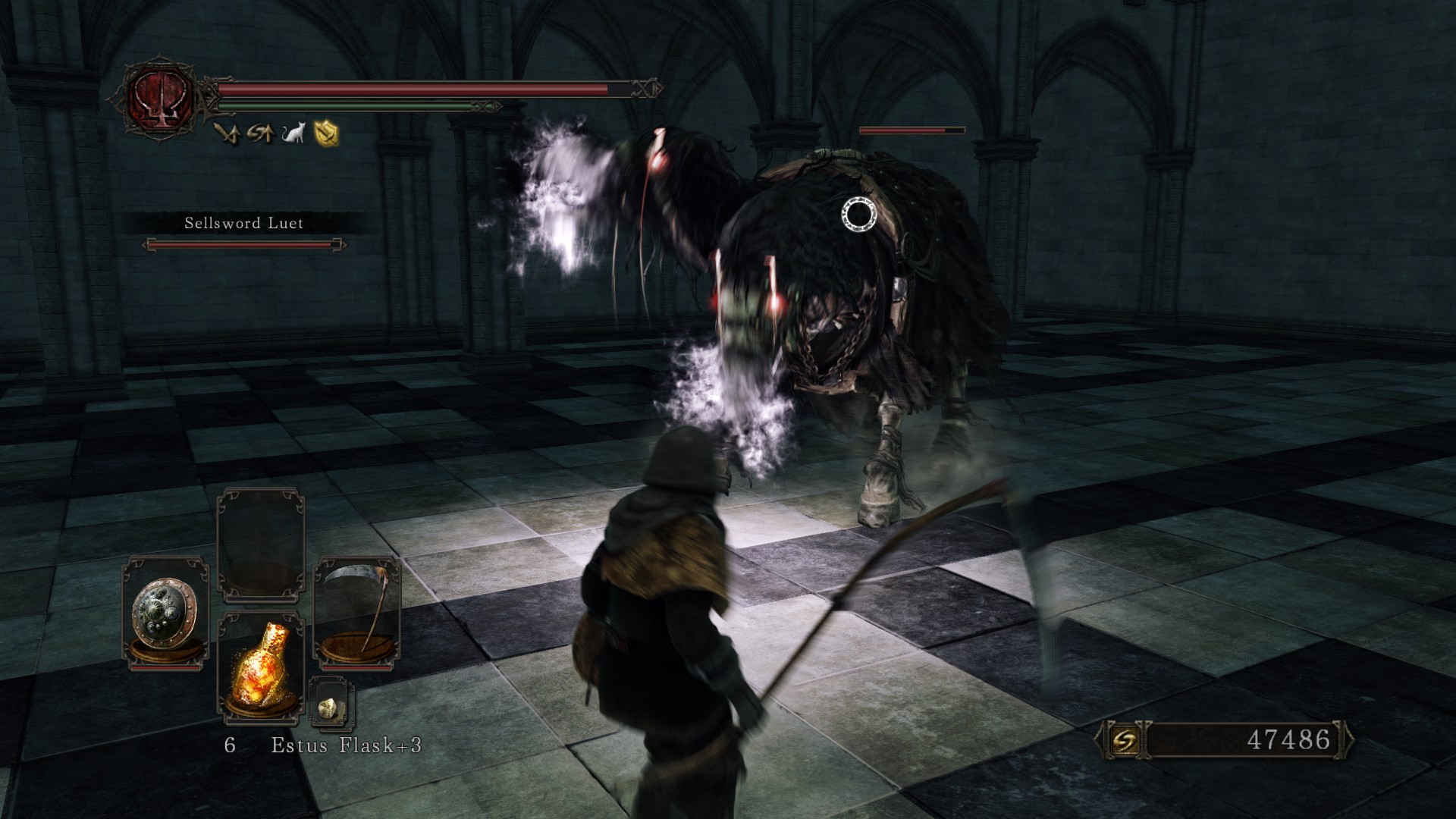
Scholar of the First Sin also makes a bunch of other unneeded changes to the base game. Tons of pathways and areas that were previously open are now arbitrarily closed. Players instead need Fragrant Branches of Yore to open them, which were pretty rare to locate as they were. All in all, it looks like the game’s remaster really tried to dress it up in a new coat of paint. But ultimately only added to its existing list of issues.
Clunkiness In Abundance
Even with the problems mentioned above, it could’ve been possible for DS2 to be a good Souls game. However, the game arguably fails at the one thing that’s the bread and butter of all Souls titles. And that’s the combat and movement. Combat in these games has to be like a dance, careful and precise. Players need to have agency over their moves and animations need to feel snappy and accurate.
DS2 unfortunately suffers from a lot of sloggy movement. This is exacerbated by the hitboxes being off, and at times, completely inaccurate. It’s almost impossible to tell what exactly causes the movement in DS2 to feel so different from other Souls titles. But it’s something veteran players of the Souls series can immediately pick up on. Even if they can’t put it into words.
That said, the one element that is often blamed for the game’s poor combat system, is the focus on the Adaptability stat. In DS1, when you dodge an enemy’s attack, your character receives a few frames in invincibility, which are known as i-frames. These are determined by your equip load, making it so the lighter weight you have, the more likely you are to dodge an incoming attack.
Is there a REASON analogue movement is so clunky compared to DS1?
byu/ArcaneAzmadi inDarkSouls2
DS2 completely changes this system, adding in the ADP stat into the mix. The higher your adaptability is, the more iframes you will have when dodging. The problem is, this isn’t mentioned anywhere in the game. DS2 instead describes ADP as a state that simply “governs agility“. Because of this, players who don’t prioritize the stat might end up feeling like they’re constantly getting hit by things they clearly dodged away from.
Consequently, investing heavily into the stat kind of breaks the entire game. Players are able to simply dodge and roll away from entire attacks, even if they mistimed them. It breaks the beautiful to and fro of the Souls games and is one of the biggest reasons why DS2 continues to remain so hated by a large portion of the Souls community.
Thanks! Do share your feedback with us. ⚡
How can we make this post better? Your help would be appreciated. ✍

